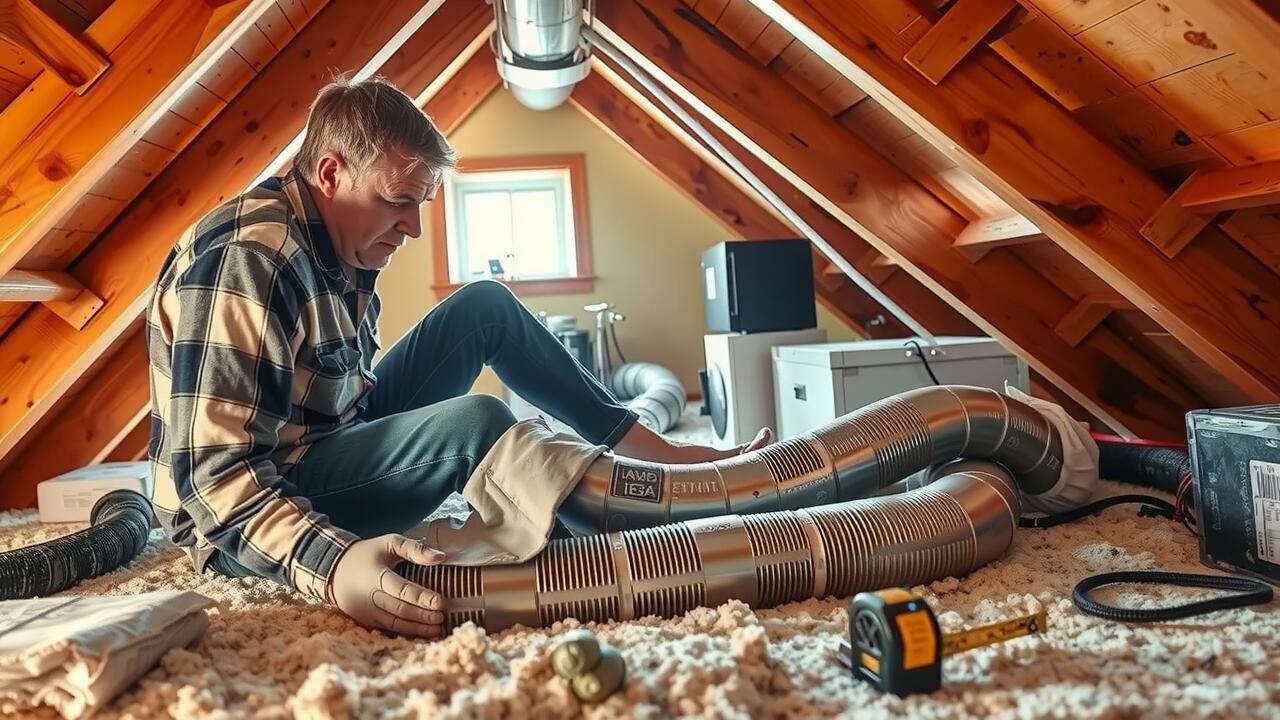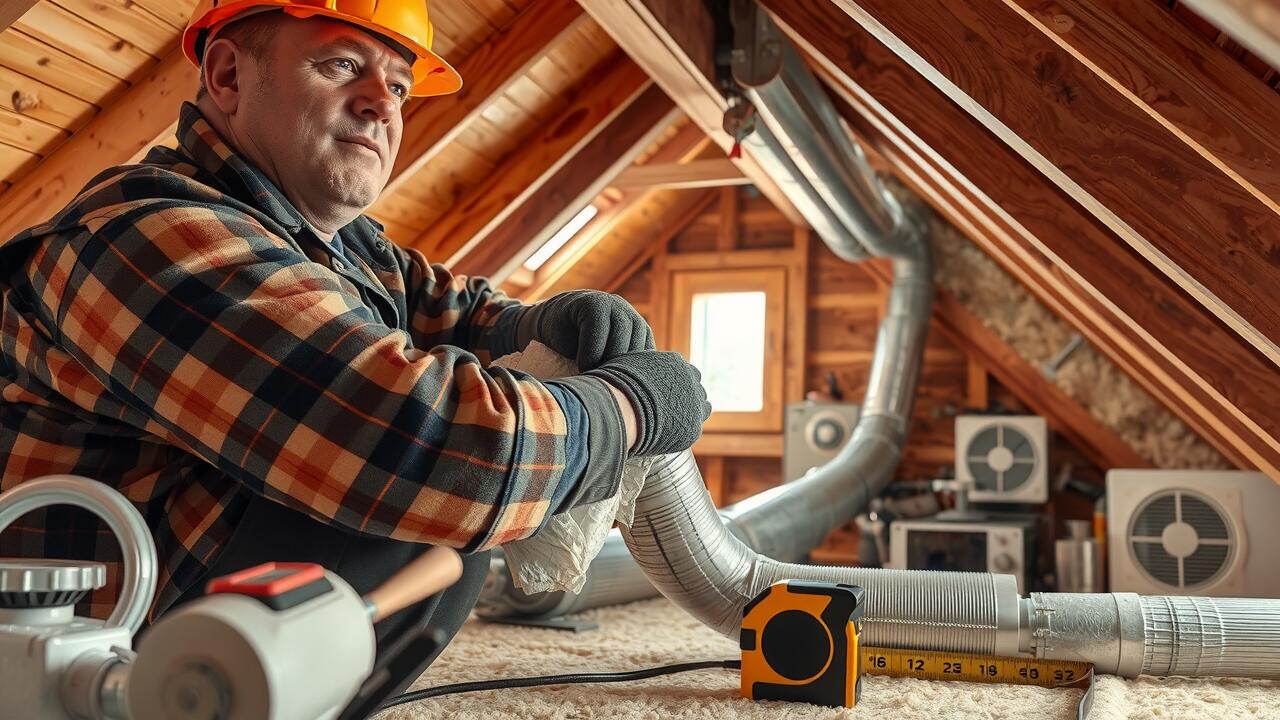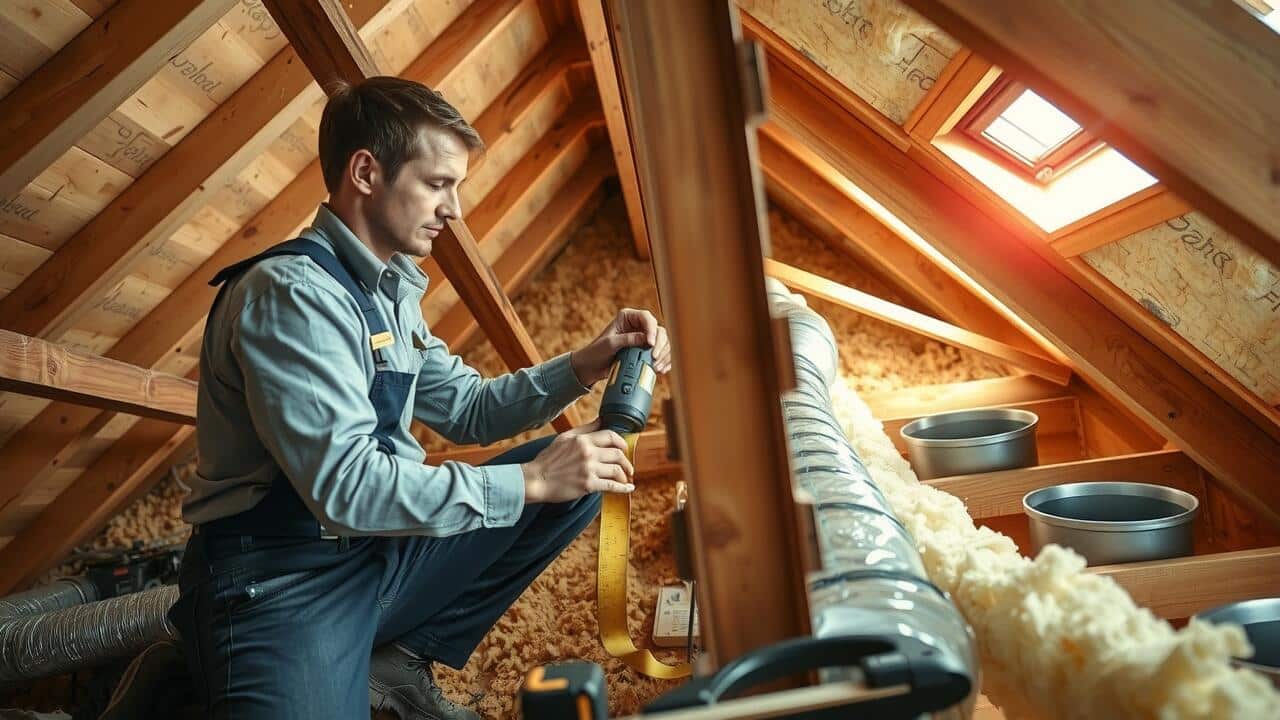
Table Of Contents
Duct Wrap Insulation
Duct wrap insulation is an effective solution for improving energy efficiency in HVAC systems. This type of insulation typically consists of a layer of fiberglass or foam, designed to surround air ducts and minimize heat loss or gain as air travels through the system. In locations with significant temperature fluctuations, such as Air Duct Insulation Berg’s Mill, San Antonio, duct wrap can help maintain consistent indoor comfort while reducing energy costs.
The installation process of duct wrap insulation is relatively straightforward. It involves wrapping the insulation material around the ducts and securing it in place with tape or adhesive. Proper installation ensures a snug fit, which is essential for maximizing the insulation’s effectiveness. Beyond energy savings, duct wrap insulation can also help to reduce noise transmission from the HVAC system, creating a quieter indoor environment.
Installation Process and Benefits
The installation process for duct wrap insulation involves several steps that ensure a snug fit around the air ducts. First, it is essential to measure the ductwork accurately. After cutting the insulation material to size, it is wrapped around the ducts with care, making sure to cover all exposed surfaces. Using adhesive or tape to secure the edges can help prevent air leaks. Duct wrap insulation is designed to be flexible, which allows it to easily adapt to various shapes and sizes of ductwork. Companies like Air Duct Insulation Blue Star, San Antonio, provide professional services to ensure that the installation meets industry standards.
The benefits of proper duct insulation are significant. Effective insulation reduces energy costs by minimizing heat loss during heating or cooling. It also enhances overall system efficiency, leading to improved indoor air quality and comfort. Additionally, well-insulated ducts help maintain consistent temperatures throughout a building. This can reduce the workload on HVAC systems, potentially extending their lifespan. Overall, investing in duct wrap insulation can yield long-term savings and comfort benefits for homeowners and businesses alike.
Comparison of Insulation Materials
When evaluating different insulation materials for ducts, it is essential to consider their thermal resistance, moisture control, and installation ease. Fiberglass insulation is a popular choice due to its affordability and effectiveness in minimizing heat loss or gain. It often comes in pre-formed sections for easier installation. However, it may absorb moisture if not properly sealed, leading to mold growth. In contrast, foam board insulation provides superior moisture resistance and rigidity, making it ideal for areas with high humidity. Its installation usually requires more effort, as it is less flexible than fiberglass.
Another option includes reflective insulation, which works by reflecting radiant heat away from the ducts. This type is particularly effective in hot climates and can reduce cooling costs significantly. However, reflective insulation might not be as effective in cold conditions. When considering insulation for your needs, especially in locations like Air Duct Insulation Lackland Terrace, San Antonio, understanding the specific benefits and drawbacks of each material becomes crucial. Evaluating factors such as climate, ductwork location, and budget can guide homeowners in making an informed choice.
Pros and Cons of Each Type
When selecting duct insulation, various materials present distinct advantages and disadvantages. Fiberglass insulation is popular due to its cost-effectiveness and ease of installation. It also offers excellent thermal resistance. However, its effectiveness can be compromised if moisture is present, leading to mold issues. Foam board insulation provides exceptional insulating properties and is often used in more specialized applications. Its rigidity helps maintain duct shape but can be more difficult to install in tight spaces.
Reflective insulation is another option, particularly useful in warmer climates where it mitigates heat gain. This type reflects radiant heat but requires an air gap to be effective. Additionally, spray foam insulation forms an airtight seal that minimizes air loss but can be more expensive and labor-intensive to apply. For those in the Cassin area of San Antonio considering options, understanding these pros and cons is essential to make an informed decision on the best air duct insulation for their needs.
Choosing the Right Insulation Thickness
Selecting the appropriate thickness for duct insulation is pivotal for optimizing energy efficiency and comfort in any space. Factors such as the local climate, the type of HVAC system, and building codes play a significant role in determining the ideal thickness. In warmer climates like Hilltop, San Antonio, thicker insulation can help prevent heat gain, ensuring that cooled air remains at the desired temperature. Conversely, in cooler regions, adequate thickness is essential to prevent heat loss from heated air traveling through ducts.
When choosing insulation thickness, it’s also important to consider the specific materials used. Some insulation types provide better R-values at thinner profiles, while others may require greater thickness to achieve the same energy efficiency. Assessing the trade-offs between material performance and thickness can lead to better energy savings, ultimately impacting both utility bills and overall comfort. For residents in areas like Air Duct Insulation Hilltop, San Antonio, investing in the right thickness ensures effective climate control throughout the year.
Factors to Consider
When selecting insulation for ducts, several factors play a crucial role in ensuring optimal performance. One key consideration is the climate in which the installation will occur. In warmer regions, like San Antonio, effective insulation can help maintain cool air, reducing energy consumption and costs. Homeowners should also assess the current ductwork’s condition, as older or damaged ducts may require different insulation solutions compared to new systems.
Another important aspect to evaluate is the type of insulation material. Different materials offer varying R-values, which measure thermal resistance. Materials like fiberglass, foam, and reflective barriers each have their own pros and cons. Consulting professionals, such as those at Air Duct Insulation Blue Star, San Antonio, can provide valuable insights tailored to individual needs. They can help determine the best thickness and type based on the home’s specific requirements and budget.
FAQS
What is duct wrap insulation?
Duct wrap insulation is a type of insulation that encases ducts to minimize heat loss or gain, improving overall energy efficiency. It usually consists of a layer of fiberglass or foam, which helps to maintain the temperature of the air traveling through the ducts.
How do I install duct wrap insulation?
The installation process involves wrapping the insulated material around the ductwork and securing it with tape or mechanical fasteners. It’s important to ensure a snug fit to prevent any thermal bridging and to cover any seams or joints properly.
What are the benefits of insulating ducts?
Insulating ducts can improve energy efficiency, reduce heating and cooling costs, prevent condensation, and enhance indoor air quality. Proper insulation also helps maintain consistent temperatures throughout the home.
How do different insulation materials compare?
Different materials, such as fiberglass, foam board, and reflective insulation, vary in R-value, cost, and ease of installation. Each type has its own pros and cons, and the best choice depends on factors like climate, duct location, and budget.
What factors should I consider when choosing insulation thickness?
When selecting insulation thickness, consider factors such as the local climate, the type of ductwork, energy efficiency goals, and local building codes. Additionally, thicker insulation generally offers better thermal performance, but it may also come at a higher cost.


